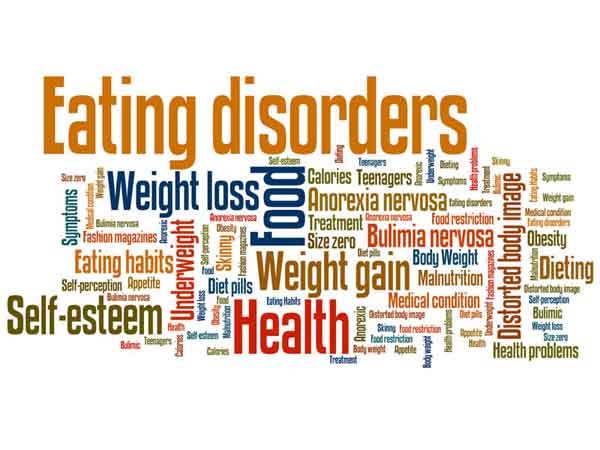Evidence Lacking on Eating Disorder Screening, Says USPSTF
March 21, 2022, 4:55 p.m. News Staff — On March 15, the U.S. Preventive Services Task Force posted a final recommendation statement, final evidence review and evidence summary on screening for eating disorders in adolescents and adults.

Based on a review of the evidence, the task force concluded there is insufficient evidence to assess the balance of benefits and harms of screening for eating disorders in adolescents and adults. This is an “I” recommendation, and applies to individuals age 10 years or older who have no signs or symptoms of eating disorders.
“The task force looked at evidence on screening for eating disorders because of the serious harm these conditions can cause to mental and physical health, but unfortunately we found very little research in people without signs or symptoms,” task force member Lori Pbert, Ph.D., said in a USPSTF bulletin. “In the absence of this evidence, clinicians can help their patients by being aware of the signs and symptoms of eating disorders, listening to patient concerns and connecting the people who need it to care.”
The Diagnostic and Statistical Manual of Mental Disorders, Fifth Edition defines feeding and eating disorders as “a persistent disturbance of eating or eating-related behavior that results in the altered consumption or absorption of food and that significantly impairs physical health or psychosocial functioning.”
According to the National Institute of Mental Health, eating disorders can affect individuals of all ages, racial and ethnic backgrounds, body weights and genders. While eating disorders frequently occur during adolescence or early adulthood, they may also develop in childhood or later in life. Evidence also indicates that the odds of being diagnosed with an eating disorder such as binge-eating disorder, anorexia nervosa or bulimia nervosa are significantly higher in women than men.
Story Highlights
Development of Final Recommendation
Although the USPSTF has previously published related recommendations on screening for depression in adults and in children and adolescents, interventions to prevent perinatal depression in pregnant and postpartum individuals at increased risk, behavioral interventions to prevent obesity-related morbidity and mortality in adults and screening for obesity in children and adolescents, the agency stated in its bulletin that eating disorders was a new topic for review. The task force also stated that it was an important topic to address because of the toll that eating disorders can take on individuals and their families.
To develop the final recommendation, the USPSTF commissioned a systematic review to evaluate the benefits and harms of screening for eating disorders in adults and adolescents with a normal or high BMI. It did not consider evidence that was limited to populations that are underweight or that have other physical signs or symptoms of eating disorders.
The review also evaluated the effectiveness of interventions for improving health outcomes in screen-detected or previously untreated adolescents and adults with eating disorders, as well as the harms of interventions.
The evidence review consisted of English-language articles published in PubMed/Medline, the Cochrane Library, the PsycInfo database and trial registries through Dec. 18, 2020, along with reference lists of retrieved articles and studies suggested by outside experts and reviewers. Additional literature surveillance was conducted through Jan. 1, 2022. A total of 57 unique studies were included in the review.
Results and Future Research
While there were no studies that directly assessed the benefits and harms of screening, the task force said potential harms could include false-positive screening, which could lead to unnecessary referrals, treatments or labeling.
The researchers found that screening questionnaires available for use in primary care have adequate accuracy for detecting eating disorders in adults, with the SCOFF (Sick, Control, One, Fat, Food) questionnaire the most commonly studied resource. For adolescents, however, the accuracy of screening questionnaires for detecting eating disorders was unclear.
With regard to interventions, guided self-help was shown to improve eating disorder symptom severity and depressive symptoms among referred adult populations with binge-eating disorder. Lisdexamfetamine and topiramate also were shown to be effective in reducing eating disorder severity among referred adult populations with binge-eating disorder, but were associated with adverse effects such as insomnia, dry mouth and paresthesia.
Based on the findings, the task force noted several gaps to be addressed through additional research. They called for trials that would directly focus on health outcomes among screen-detected populations in a general primary care population, which would help to better understand the potential benefits and harms of screening and generate more data on the prevalence of eating disorders in primary care. Given that adolescence is a known time of risk for eating disorder onset, the researchers also called for more studies to assess the accuracy of screening for eating disorders in adolescents. In addition, the task force called for studies that enroll more diverse patient populations with regard to race, ethnicity, gender and sexual identity to help determine whether findings are broadly representative of the general population.
Response to Public Comment
A draft version of the recommendation statement was posted for public comment on the USPSTF website from Oct. 19, 2021, to Nov. 15, 2021.
In response to several comments that asked for clarification of the patient population under consideration, the task force added language to the Practice Considerations section regarding the asymptomatic patient population.
The task force also added language to the Supporting Evidence section in response to comments that requested additional details on the benefits of treatment.
Up Next
The AAFP’s Commission on Health of the Public and Science will review the task force’s final recommendation statement, final evidence summary and evidence review, and will then determine the Academy’s stance on the recommendation.